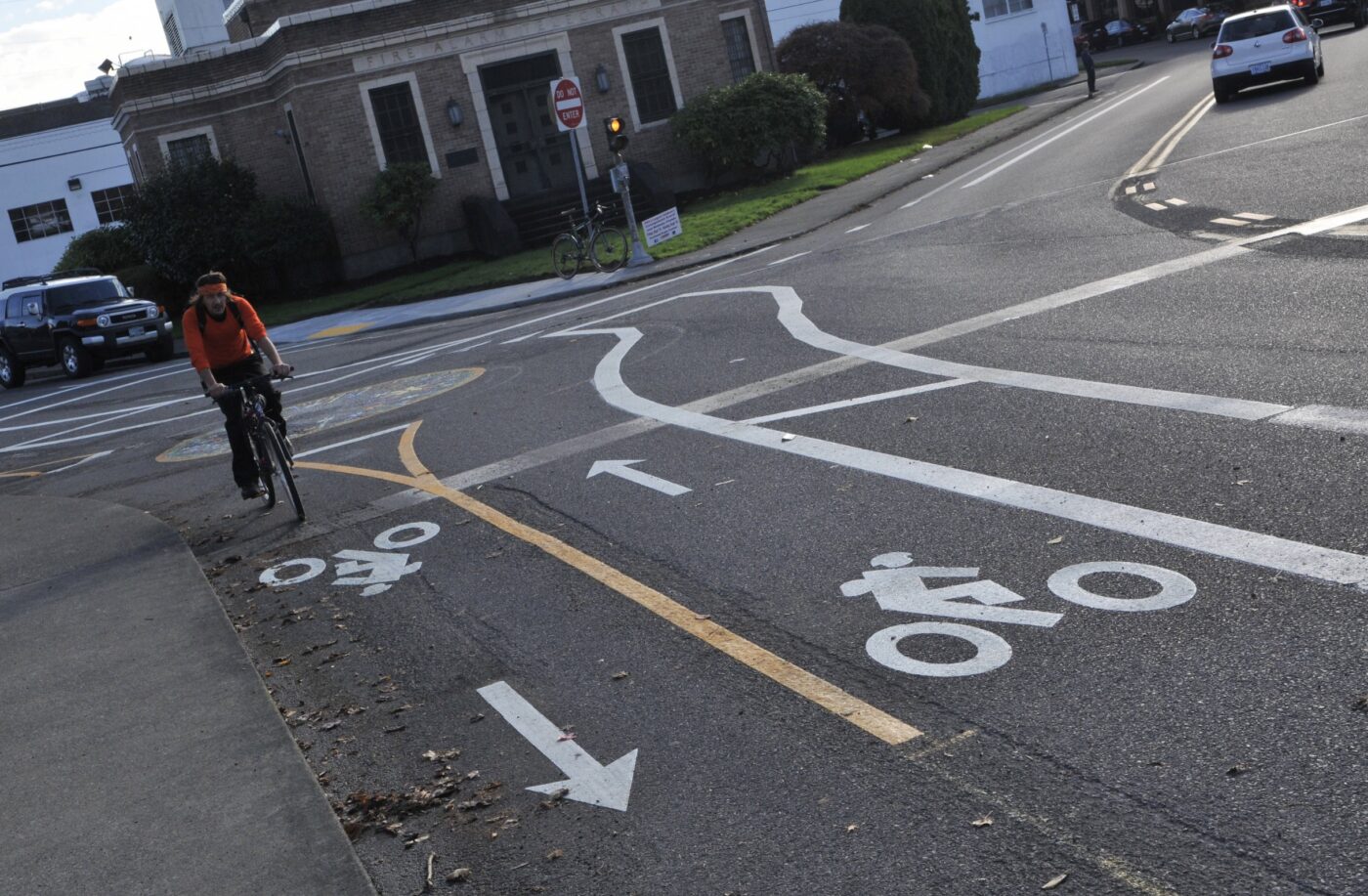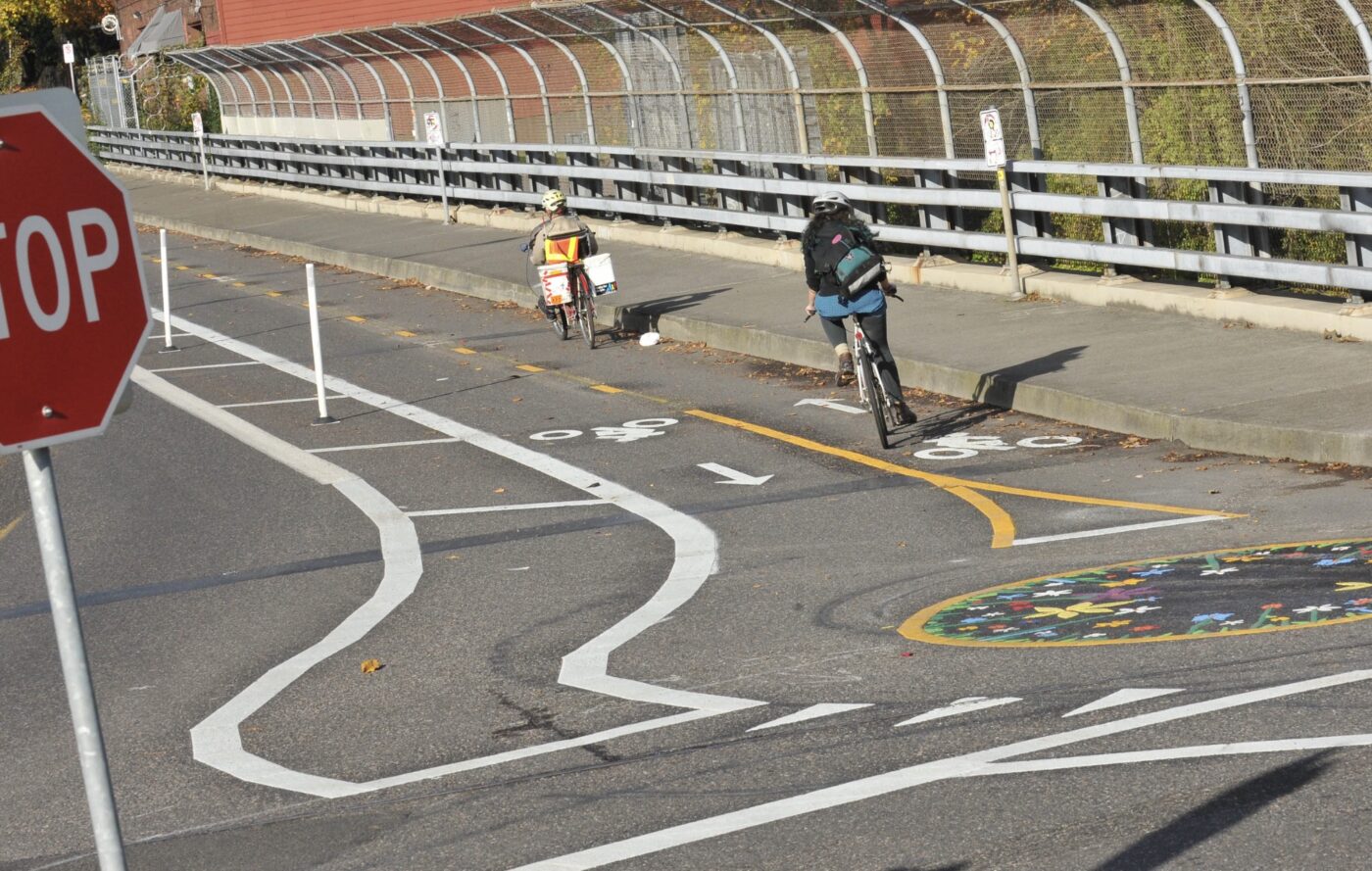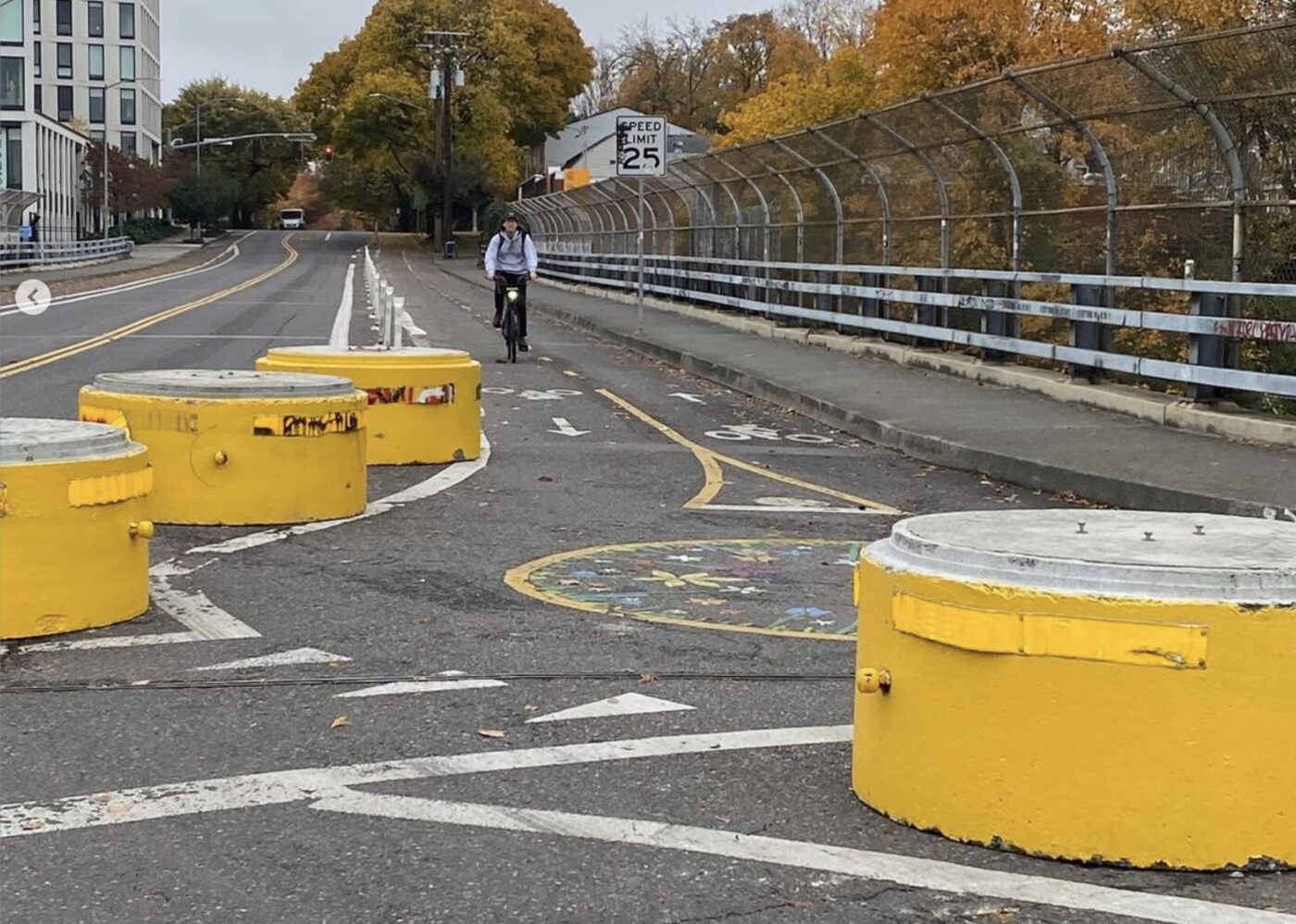On Wednesday, crews from the Portland Bureau of Transportation placed four large, 2,000-pound concrete drums (PBOT refers to them as “planters” because they also use them for that purpose) on the southeast corner of the Northeast 21st Avenue overpass of I-84. It’s the exact location where a woman was hit and seriously injured by a car driver while biking in the previously unprotected lane.
In posts on social media, PBOT said the move was aimed at providing “hardening protection for bicyclists.” The bureau added that new signage warning car drivers of a curve in the road and a restriction on truck use on NE 21st Circle is also in the works. This is a great and very welcome upgrade that has very real safety benefits.
PBOT installed the two-way bike lane with plastic flex-posts (aka delineators”) in 2016. When we reported on the project, commenters predicted that head-on collisions were likely. And that’s exactly what happened on August 31st when the driver of a Honda Civic failed to negotiate the curve, slammed into a woman biking in the opposite direction, and then sped off.
If these barricades were in place from the start, that woman would not have been hit. In the video, the driver of the Civic plowed right over the plastic posts as if they were not even there.





That collision was shocking and terrifying. Video taken by a driver’s dashcam and shared with BikePortland showed that the flex-posts were useless as the driver careened into the bike lane and the impact catapulted the rider into the air — flipping her body head-over-heels two times before she landed on her face on the adjacent sidewalk. The woman suffered gashes requiring stitches on her cheek and eyebrow. BikePortland ultimately removed the video and the story (which included a graphic photo of the victim’s bloodied face) by request of the victim*; but not after it had been viewed hundreds of thousands of times. (*The victim only wanted it posted to catch the driver and asked me to remove it all after police apprehended them.)
The collision spurred even greater urgency from the community for protected bike lanes. A week later, a group of guerrilla activists placed concrete curbs in the curve. Those curbs were quickly removed by PBOT and the agency said in a social media post that they were “unauthorized safety hazards.” The collision video also inspired a letter from BikeLoud PDX to PBOT staff and Portland City Council members (dated September 12th) that made the following request: “Use physical protection rather than plastic delineators in new bike lane projects, especially at curbs, corners, or where the speed limit is greater than 20 miles per hour.”
This context is why many Portlanders have taken umbrage at PBOT’s claim in their post yesterday that, “There have not been reported traffic deaths or serious injury crashes at this location.” That statement appears to create a narrative that this wasn’t a reactionary move. As if PBOT would have done it even if there wasn’t a violent, predictable collision caught on video.
Beyond any operational, policy, or budget issues PBOT faces in deciding whether or not to harden bike lanes to defend against increasingly reckless drivers, an additional challenge at this specific location was that it is on a bridge surface. That means PBOT engineers need to be careful about doing anything that might erode the structural integrity of the bridge — especially by placing heavy objects and/or drilling into the pavement.
According to PBOT each one of these planters that is filled with concrete cost about $5,000 to build and install.
Asked about their statement that there have been “no reported serious injury crashes at this location,” PBOT Public Information Officer Dylan Rivera told BikePortland that, “To our knowledge the person bicycling in the August crash did not suffer life-threatening injuries resulting in a Major Crash Team investigation by Portland Police. That would be one indication of a serious injury crash. Through the course of our work on traffic safety, Portland Police and PBOT staff are regularly exposed to the horrific details of how traffic crashes impact human beings on our streets. A crash doesn’t have to produce life-threatening injuries to cause very significant harm.” PBOT then explained that they don’t receive official reports of all injury crashes, only the ones that the PPB’s Major Crash Tam responds to and investigates. The other major source of injury data PBOT uses comes from the DMV through the State of Oregon and those reports lag about 18 months due to ODOT’s reporting process. “We share the public’s frustration that it takes so long for this data to be available,” Rivera said.
CORRECTION, 12:22 pm: This story initially said ODOT had jurisdiction of the overpass and had to be notified by PBOT as part of this project. That was incorrect. PBOT owns this bridge. I regret the error and any confusion it might have caused. – Jonathan


